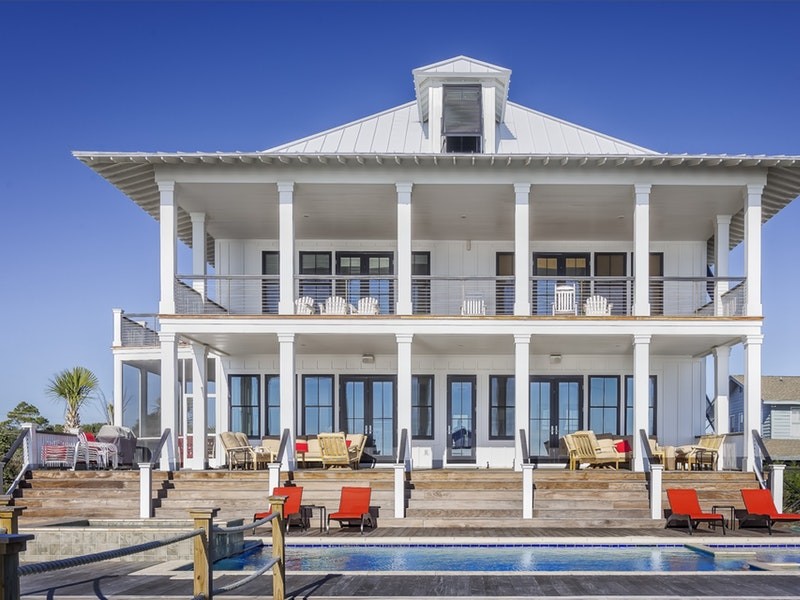The U.S. economy continues to grow – and Florida’s economy is doing even better, outpacing the nation’s growth, according to economic experts who spoke to a crowd of more than 400 Realtors® at the 2020 Florida Real Estate Trends summit during last week’s Florida Realtors Mid-Winter Business Meetings.
“We’re in the 11th year of the U.S. economic recovery – the longest economic recovery in U.S. history – and there are no indications that’s going to end any time soon,” said Dr. Sean Snaith, director of the University of Central Florida’s Institute for Economic Forecasting. “The national unemployment rate is 3.5%. The labor market is strong by virtually any measure: The number of available jobs exceeds the number of people seeking them and jobs growth is strong.”
Florida’s economy is doing “even better than the national economy as a whole and it has been since 2012,” he said. “Our unemployment rate is down to 3.3%. Florida’s GDP (Gross Domestic Product) continues to grow faster than the U.S.’s GDP, and our job growth rate is almost twice the national rate. Florida’s population growth is solid – the birth rates are better than the death rates, so we’re making new residents faster than we’re losing them.”
While the factors that fueled fears of a possible recession in 2020 have mostly faded, Snaith pointed out one area to keep an eye on: the U.S. debt, which now exceeds $23 trillion. Despite the high deficit, however, the U.S. continues to get the highest possible ratings on American bonds. He said that while he’s concerned with the amount of the debt, it’s the government’s ability to service that debt that really matters.
Snaith cited the economic crisis in Greece (which began in 2008) as an example, noting the cause was the country’s inability to service its sovereign debt owed to the European Union (EU). To avoid default on the debt, the EU loaned Greece enough money to continue its payments; now the repayments for that bailout will take decades.
He added that another factor that may be weighing on the economy and slowing expansion is the rapid growth of regulations. “Some regulations make sense,” Snaith explained, “but you have to weigh the benefit of the regulations against the cost. I think revisiting Dodd-Frank and other regulations make sense. To me, that is the secret sauce of economic growth.”
Providing an update on Florida’s residential real estate market, Florida Realtors Chief Economist Dr. Brad O’Connor agreed, and he anticipates a robust outlook for the state’s housing market. He noted that in-migration to Florida from other states remains strong, with the five top origin states being New York, Georgia, Virginia, Pennsylvania and New Jersey, respectively. In fact, that in-migration to the Sunshine State helped to drive increased home sales in 2018, picking up the pace from a 9% drop in home purchases in the state by international buyers.
“It was exciting to see the almost 6% growth (5.9%) in closed single-family sales in 2019 from 2018,” O’Connor said. “Florida topped over $100 billion (total of “$101.9 billion) in volume in home sales last year, up 8.3% from 2018; for condo-townhouses, we reached $31.6 billion in volume, up 1.8% over the 2018 figure.”
Unfortunately, he added, new listings for single-family homes and condo-townhouse units remained tight in 2019, with single-family homes down 11.4% and condo-townhouse properties down 9.7% compared to 2018.
“My final point: The median sales price still continues to rise, but looking at what the monthly mortgage payment is, that’s still a lot lower due to current historically low mortgage rates,” O’Connor said. “And that continues to drive sales and makes it a good time to buy.
“Overall, I think we can expect to see a similar amount of price appreciation over the coming year, at about 4%, and I think we’ll see a similar amount of growth in closed sales for 2020 at about 4%.”
The event concluded with experts addressing supply-side dynamics for new construction and development. Moderated by Jennifer Quinn, economist and director of economic development for Florida Realtors, the panel included Kristine Smale, senior vice president, Meyers Research; Matt Orosz, president and owner, Hanover Family Builders; and Brad Fess, founder of NuDesign Builders.
According to Smale, the three main factors constraining the supply side of new house are: higher construction costs, which moderated slightly in 2019 but are expected to rise again in 2020; a shortage of labor – 2019 had the largest amount of construction job postings since the Great Recession; and a lack of available, affordable land supply.
“Far and away, for us, it’s land – land availability and all the intricacies involved with that,” Orosz said. “From our perspective, especially in Central Florida, what is holding back growth and the market is local land supply, impact fees and land costs.”
As a remodeler, Fess said they face a slightly different problem, and that’s finding in-fill lots in very developed areas or homes to remodel for clients who want a smaller “jewel-box” home that still has all the amenities and custom, high-end finishes.
The title sponsor for the 2020 Florida Real Estate Trends was the Realtors of Broward, Palm Beaches and St. Lucie; co-sponsors included the Orlando Regional Realtor Association; the Realtor Association of Sarasota and Manatee; the Royal Palm Coast Realtor Association; the Realtors Association of Citrus County Inc.; and the Naples Area Board of Realtors®.
Florida Realtors® serves as the voice for real estate in Florida. It provides programs, services, continuing education, research and legislative representation to 195,000 members in 51 boards/associations. Florida Realtors® Media Center website is available at http://media.floridarealtors.org.





